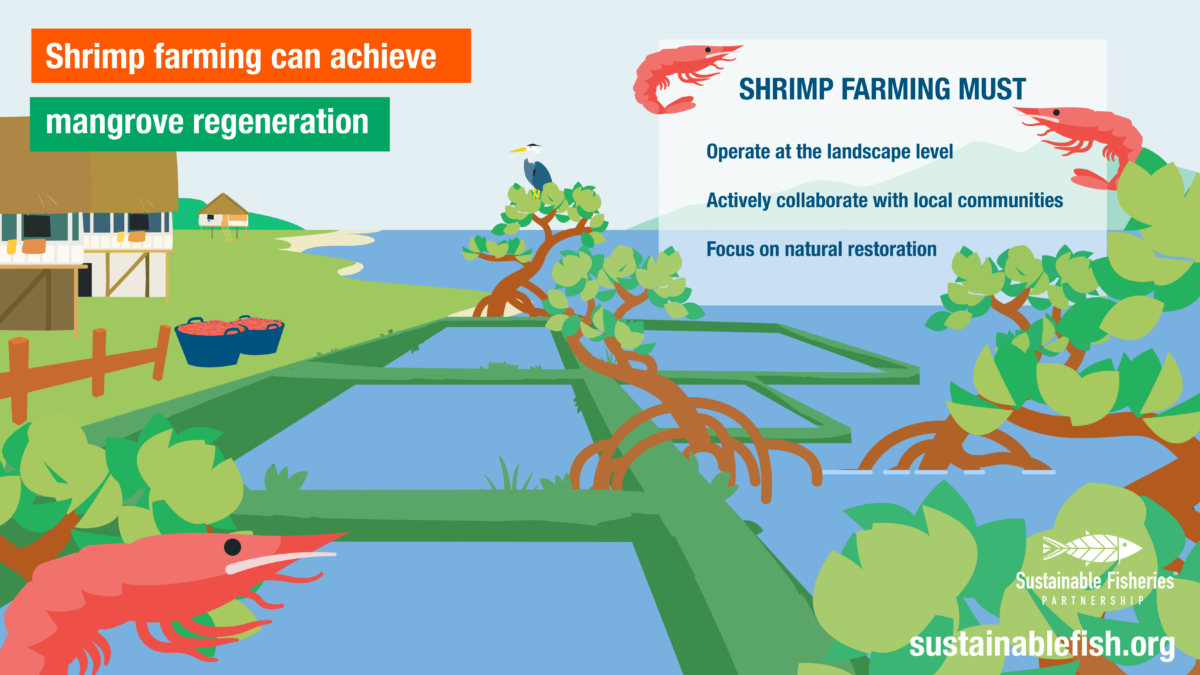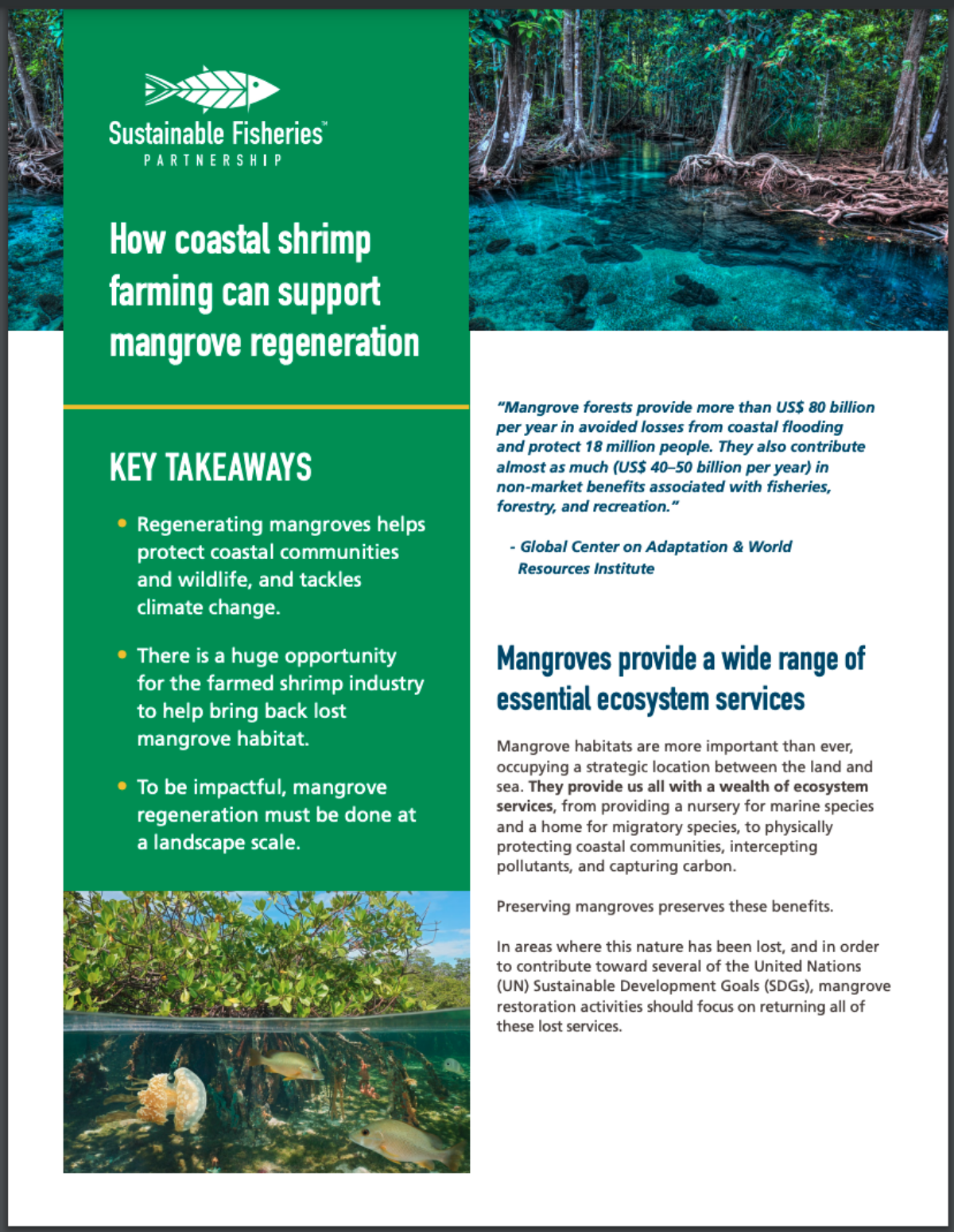Promoting ecosystem aquaculture
Habitat regeneration
Coastal shrimp farming can support mangrove protection and restoration.
Mangrove habitats provide a wealth of ecosystem services, from providing a nursery for marine species and a home for migratory species, to physically protecting coastal communities, intercepting pollutants, and capturing carbon to fight climate change.
Preserving and restoring mangroves preserves and increases these benefits.
Landscape-level aquaculture management can contribute to the protection and restoration of mangrove forests and the full range of ecosystem services they provide.
SFP’s research on aquaculture and mangrove regeneration shows that both abandoned and active aquaculture ponds are providing the setting for mangrove recovery to take place. This presents a huge opportunity for the farmed shrimp industry to help bring back lost mangrove habitat.
Benefits of mangrove regeneration
- For retailers and seafood companies, it can help deliver on your environmental, social, and governance (ESG) commitments and contribute toward many of the UN Sustainable Development Goals.
- For the shrimp industry and supply chain, it can lead to collaboration to meet the habitat restoration criteria of national and international certification schemes and the ESG commitments of retailers.


Related links and resources
The Global Mangrove Alliance – A collaboration of NGOs, governments, scientists, industry, local communities, and funders dedicated to conserving and restoring mangrove ecosystems.
The Mangrove Breakthrough – A global movement of communities, governments, and investors that aims to protect and restore 15 million hectares of mangroves by 2030 and mobilizing USD4 billion in capital.
Coastal Habitat Mapping (Clark Labs): Mangrove and Pond Aquaculture Conversion – interactive map on land-use changes at the national and province/state level
Global Mangrove Watch mapping tool (Global Mangrove Alliance) – Provides metrics and information on mangrove losses and gains, restoration, deforestation alerts, and biomass at the global, national, and ecosystem-level from across the globe.
Ecomonitor develops tools for nature-based solutions in SE Asia that can support mangrove restoration, including integrated mangrove aquaculture, by providing metrics to demonstrate benefits such as risk reduction, resilience support, and enhanced ecosystem services.
Hatch Blue Consulting provides information and advisory services, with market insights, investment strategies, and technology expertise across the aquaculture value chain, and expertise in blue carbon and ecosystem restoration.
What can I do?
Contact us to learn more about aquaculture and habitat regeneration, and how we can help you identify target areas for landscape-level regeneration.

